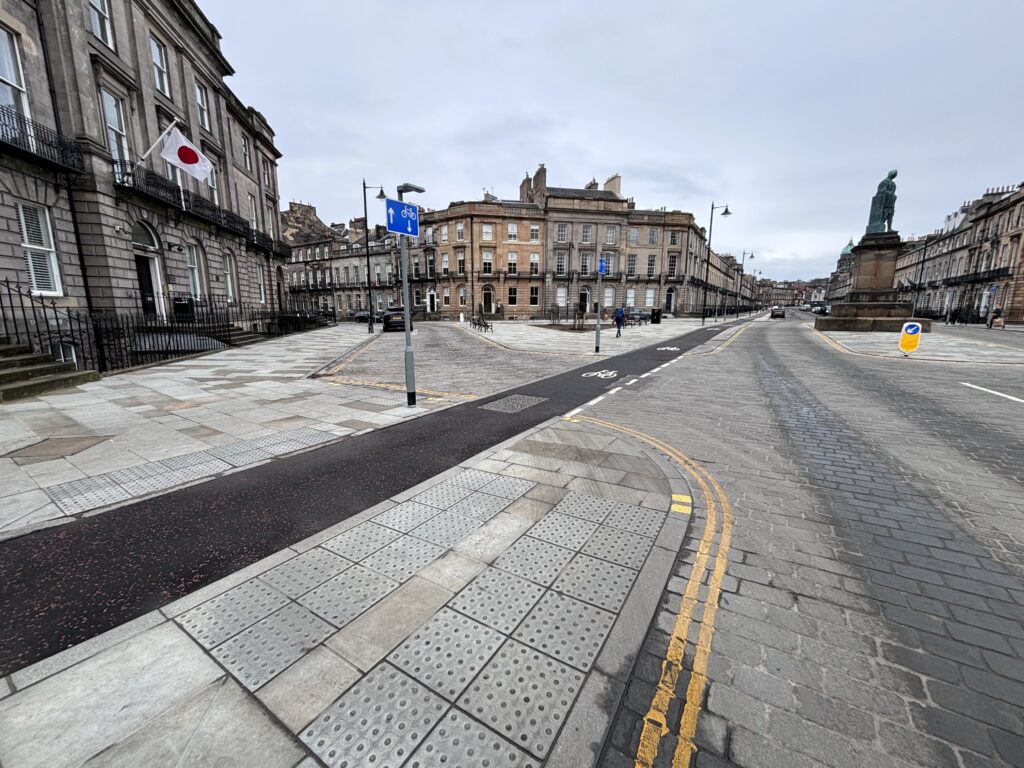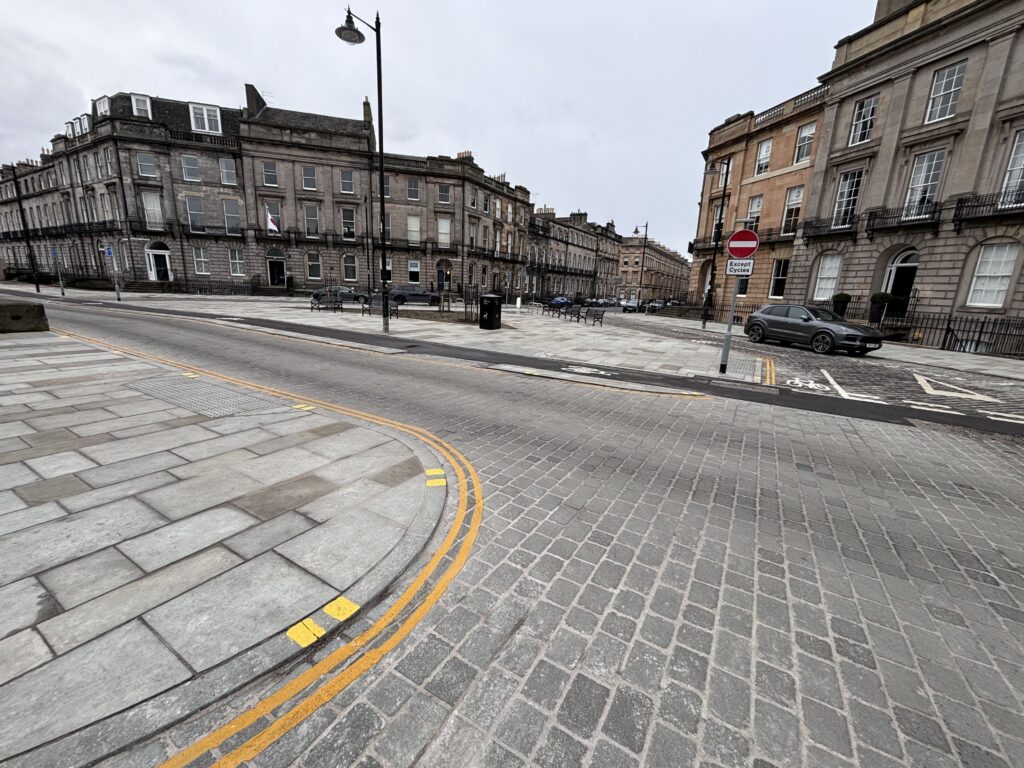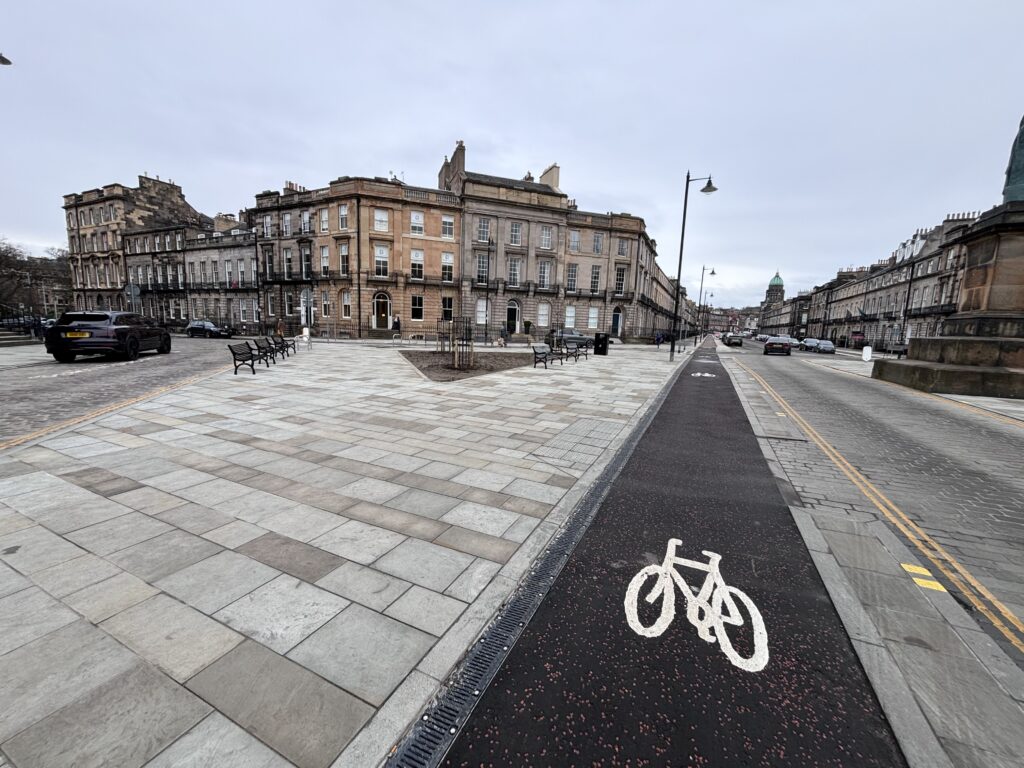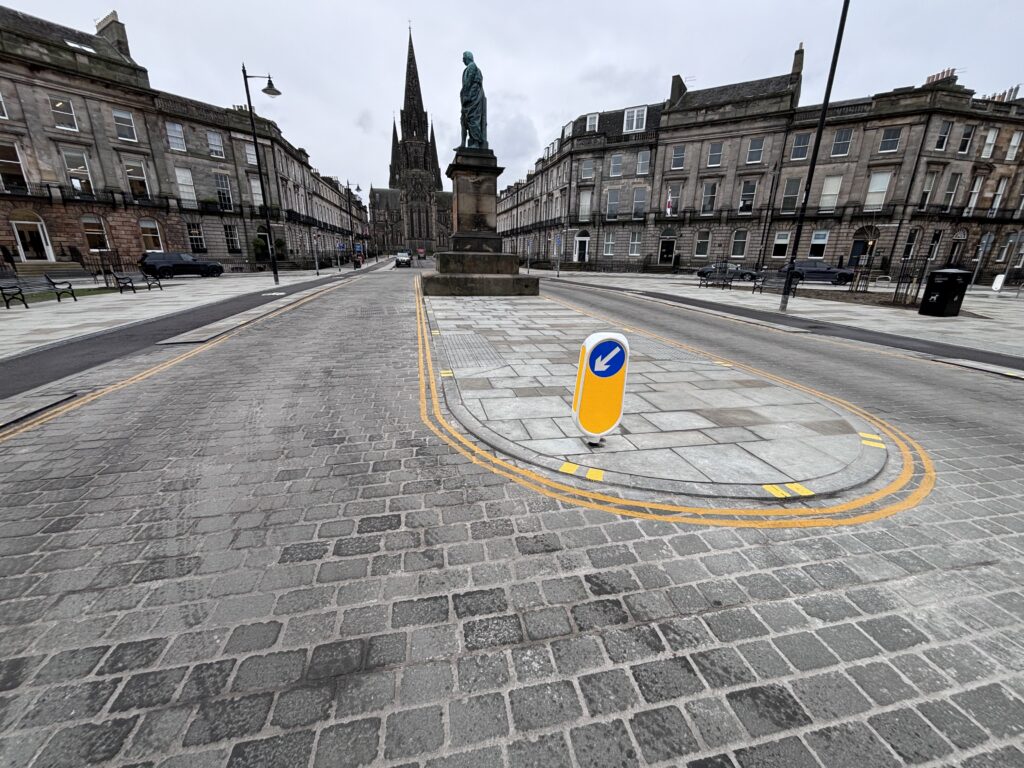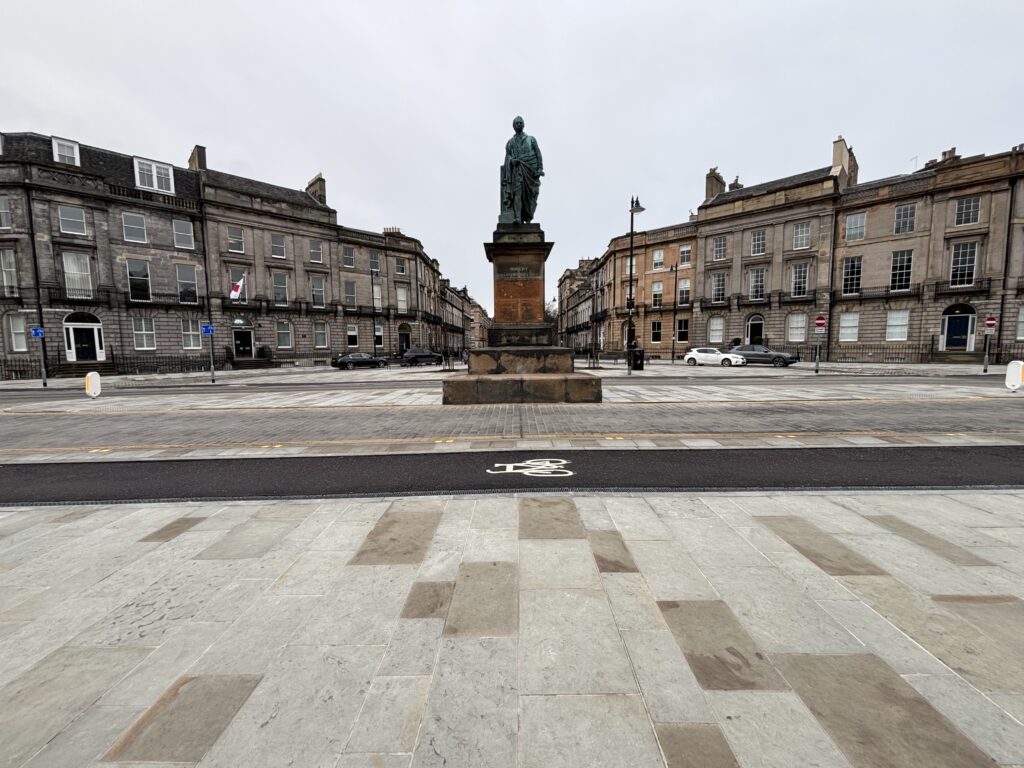Melville Crescent, Edinburgh – Balfour Beatty
Project case study – M Squared
Space: Melville Crescent is an historic street in Edinburgh’s Old Town, part of the city’s World Heritage Site
Service overview: Hard landscaping & Groundworks – lifting and relaying existing setts, reintroducing buried setts, installing new tactile paving and design paving, and installing drainage and guttering.
Project requirements: The project was a £2.1m public realm scheme to improve and restore some of the historic features Edinburgh is famed for. We were contracted to complete hard landscaping, reintroducing ‘cobbled’ sett streets and wide granite footpaths. In some areas, setts were lifted and reintroduced, having been hidden under an asphalt surface, while modern tactile paving was also introduced, to aid accessibility and safety for pedestrians. We also completed additional groundworks, installing drainage and guttering to aid surface water management.
Challenges:
- Restoration – Reclaiming, cleaning and reinstating existing and buried setts, to retain the area’s heritage and character and offer sustainability benefits.
- Location – Working within a designated World Heritage Site, including around a large sandstone statue plinth.
- Access requirements – Managing a five-phase traffic management schedule, allowing for temporary part-closures of the roads and footpaths.
- Public concerns – Understanding some of the concerns raised over the cycleways part of the wider scheme and managing interactions with the public sensitively.
- Noise sensitive site – Managing noise working close to homes and offices, including stopping all works at 2pm two-days-a-week, to accommodate sessions at a hearing clinic on Melville Crescent.
- Public, city centre location – Ensuring safe working, minimising dust creation, and respecting neighbouring homes and businesses.
Results:
- Delivered all works on time, within three days of deadline
- Only two issues reported for snagging
“The client said the work was immaculate.”
“The objective was to make the area safer for pedestrians and drivers, and to give it all a fresh look while respecting the history and look of the streets.
“A lot of materials were reclaimed setts that had already been in the ground but had been removed and cleaned up ready to be put back in. We installed some new materials too – paving and guttering.
“Health and safety is paramount on any job, but particularly on a public site in a busy city centre. There’s people walking past or working nearby who you’ve to be mindful of. We worked closely with the client’s on-site team to make sure we were always aligned on that, and used electric kit at times, to minimise dust and noise.
“Although the client had very clear requirements working for the city council we’d offer our advice on the quickest route or best way to get a job done. There are always variations to plans too so we installed extra elements like crossings and guttering for drainage.
“We were on site for five months, mainly in winter months, so we had rain, snow and frost to contend with at times. Some days were more challenging than others because of the weather – you can’t grout in rain, or pave in low temperatures – but we were able to compensate for those by bringing in extra lads the following week.
“The deadline was Christmas and we finished up three days before that, having completed each of the five phases on time.
“The client said the work was immaculate. They also remarked on how well the team was run, a lot of which was down to Kris – he made sure everything was perfect and never missed a deadline.”
Sean McIntyre, Project Manager
(Hard Landscaping)
Deliverables:
- Developed a week-by-week schedule, to fulfil a five-phase plan and rolling deadlines
- Reintroduced traditional roadway surfaces – re-laid and grouted setts
- Installed granite paving to widen pavements
- Installed new tactile paving, design paving and kerbs on footpaths
- Installed pedestrian crossings and extra paving elements, additional to original project requirements
- Constructed and installed drainage and guttering, additional to original project requirements
- Implemented traffic management systems, temporarily closing carriageways and pathways and redirecting traffic and pedestrians
- Used electric and battery powered machinery and plant to minimise noise and dust creation
- Offered advice on best practice or most practical delivery options
- Worked alongside Balfour Beatty’s teams (who completed soft landscaping and tarmacking for cycle paths) and another paving contractor during the final phase of works
